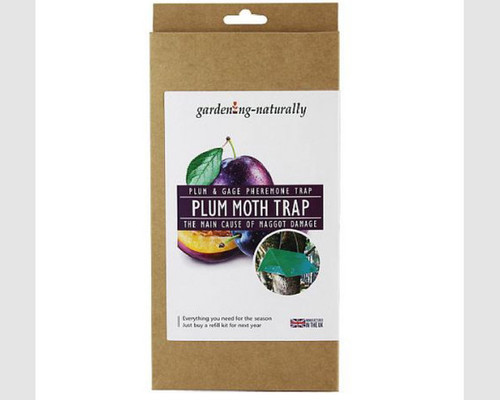Description
The Plum Fruit Moth's larvae are pinkish-coloured caterpillars that feed on plums, gages and damsons. Gardening Naturally's Plum Moth Trap uses pheromone lures that mimic the scent of the female plum moth. This scent attracts and captures adult moths. The trap will alert you to plum moth activity, so you can prepare other methods of pest control, such as nematodes or sprays.
The trap should be placed in the garden at the end of May or after petal drop. If the spring weather is exceptionally warm, or in sheltered urban gardens, it may be an advantage to install the trap in mid May. In the garden one trap should monitor up to 3 average size trees. It should be hung at around head height on the windward side of the tree (or group of trees).
Includes:
1 trap with hanging wires
2 sticky inserts.
2 pheromone lures.
When to use:
Moths fly and mate on warm nights from early June until the middle of August. The trap should be placed in the garden at the end of May. If spring weather is exceptionally warm, or in sheltered urban gardens, it may be an advantage to install the trap in mid May.
Instructions for use:
The trap should be assembled as in the diagrams shown on the packaging. The sticky inserts should be unfolded and placed, sticky side up, in the base of the trap. The pheromone lure should be removed from the foil sachet and laid in the centre of the sticky insert. The trap should monitor up to 3 average size trees. It should be hung at around head height on the windward side of the tree.
After 5 weeks replace the sticky insert and lure with the second set provided.








